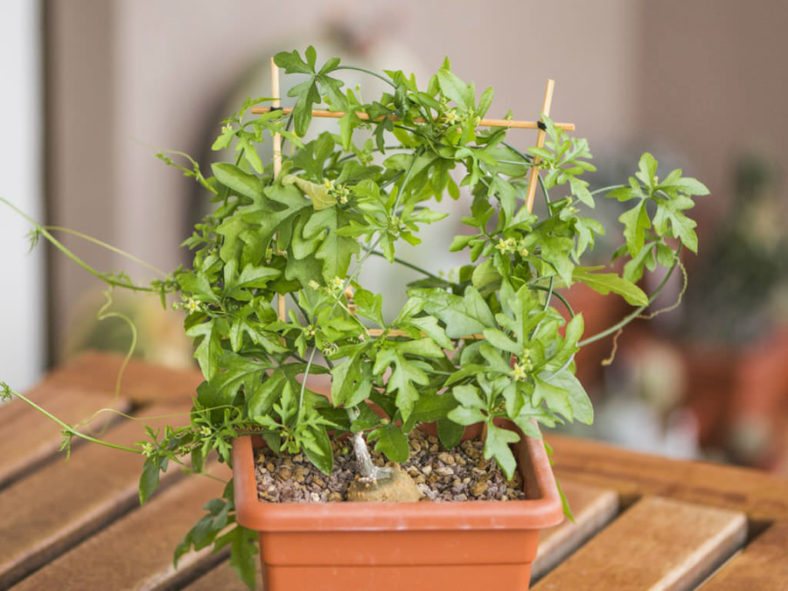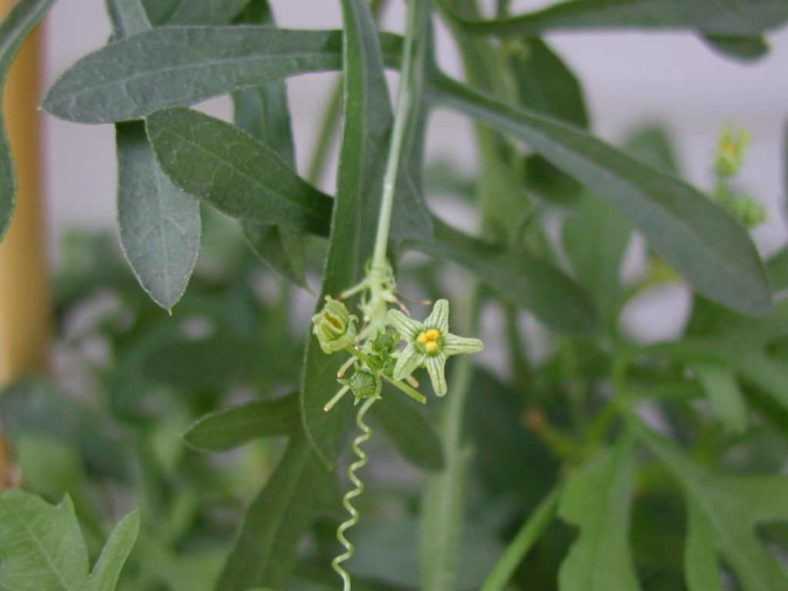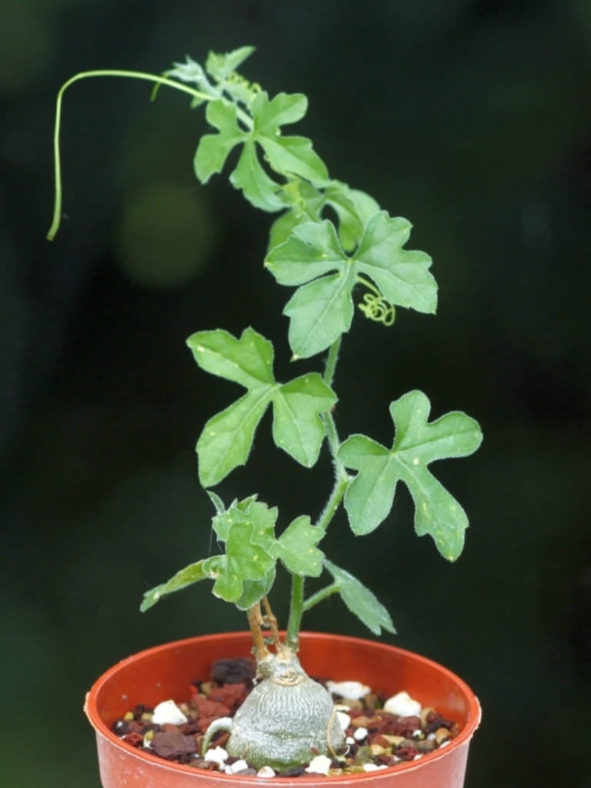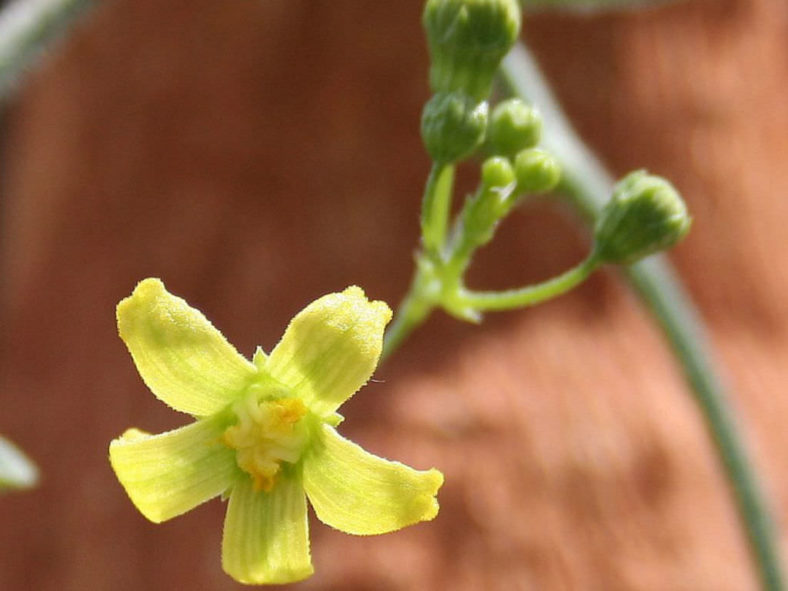Scientific Name
Kedrostis africana (L.) Cogn.
Common Name(s)
Baboon's Cucumber
Synonym(s)
Bryonia africana, Coniandra africana, Rhynchocarpa africana
Scientific Classification
Family: Cucurbitaceae
Subfamily: Cucurbitoideae
Tribe: Coniandreae
Genus: Kedrostis
Origin
Kedrostis africana is native to Namibia and South Africa. It is common in mainly more arid summer rainfall areas.
Description
Kedrostis africana is a vining succulent plant with many slender, climbing or trailing stems growing from a swollen base. The caudex is simple or branched, woody, and can reach a diameter of 20 inches (50 cm). The stems are annual, green, glabrous or nearly so, and can grow up to 20 feet (6 m) long. The tendrils are simple and slender. The leaves are alternate, green, distinctly lobed or dissected, triangular in outline, and can measure up to 4 inches (10 cm) in length.
The plant blooms during the summer. The male flowers appear solitary or in groups of up to 12 in short racemes with peduncles that can reach a length of 3.2 inches (8 cm) and range from green-yellow to whitish or cream. The female flowers are solitary or few in fascicles and range from green-yellow to whitish or cream. The fruits are spherical, red when ripe, and few-seeded, and can grow up to 0.6 inches (1.5 cm) in diameter.

How to Grow and Care for Kedrostis africana
Hardiness: USDA hardiness zones 10a to 11b: from 30°F (-1.1°C) to 50°F (10°C).
Baboon's Cucumber is monoecious (with separate male and female flowers but on the same plant) and is often self-fertile, so the showy, orange fruits are readily formed. It can be grown from seed in most areas, as long as the young plants are protected against drought, severe frost, and excessive sunlight.
The stems of Baboon's Cucumber need some support as a climber to give a showy effect. It prefers well-drained soil, ample water during the growing period, and partial sun. It grows very slowly, but the speed of growth can be increased by providing adequate water, warmth, and fertilizer during the active growing season.
Baboon's Cucumber prefers a sunny position but avoids direct sunlight in summer. Water regularly during the summer. Avoid watering in the fall or winter. It is susceptible to rot if it is too wet.
Baboon's Cucumber is one of the hardiest caudiciform plants, tolerating winter rain and several degrees of frost. It can be grown outdoors in frost-free climates, but must be kept above 32°F (0°C) and dry in winter
Links
- Back to genus Kedrostis
- Succupedia: Browse succulents by Scientific Name, Common Name, Genus, Family, USDA Hardiness Zone, Origin, or cacti by Genus
Photo Gallery
Click on a photo to see a larger version.


